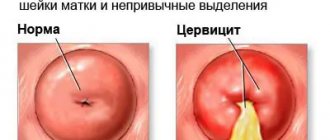Vacuum or medical abortion? What to choose?
» data-medium-file=»https://i0.wp.com/abort-spb.ru/wp-content/uploads/2018/03/vacuum-or-medication.jpg?fit=857%2C555&ssl=1″ data-large-file=”https://i0.wp.com/abort-spb.ru/wp-content/uploads/2018/03/vacuum-or-medication.jpg?fit=857%2C555&ssl=1″ title ="Vacuum or medical abortion?
What to choose? 1″> Today there are different ways to terminate an unsuccessful or unwanted pregnancy. The choice of method is influenced not only by the patient’s desire, but also by a number of other circumstances. At the same time, surgical abortion is performed less and less often - it is a dangerous and unpleasant procedure. If the patient applies in a timely manner, a medical or vacuum abortion is performed. Both procedures do not require curettage and are carried out in approximately the same time frame.
Let's figure out which method is preferable and why.
Which to choose
Some women prefer medical abortion to vacuum abortion because they do not want unnecessary medical intervention . Interruption with the help of a drug can be quite difficult physically, because it forces the body to go against itself and reject the process inherent in nature. As a result, a woman may face a serious condition resembling severe toxicosis. If she does not intend to tolerate this, it is better for her to give preference to the vacuum method.
Both methods will allow you to terminate an unwanted or medically contraindicated pregnancy. Which one to choose should be decided together with the gynecologist, and not make such a decision on your own. Both options have their consequences and contraindications that are worth paying attention to.
What is a medical abortion: did you take the pills and everything was ok?
Medabortion, often called pharmabort, is a procedure for terminating a pregnancy using pills. Naturally, many women are satisfied with the fact that they can do without any surgical intervention and being in a hospital bed.
Among all abortion options, medication is considered the most gentle and is therefore recommended by WHO as the method of choice. But despite the comparative harmlessness of such intervention, in any case, natural processes are interrupted. Therefore, when choosing between childbirth or termination, it is worth thinking about the likely consequences - hormonal imbalance, moral aspect, etc.
Abortion pills can go almost unnoticed, accompanied by signs of normal menstruation, or cause severe pain and significant general malaise, because abortion pills cause miscarriage.
What is a vacuum abortion: fall asleep, wake up and go?
Vacuum abortion - vacuum aspiration is performed using a special device that is inserted into the uterine cavity and sucks out the fertilized egg. With this option of abortion, there is no need to perform curettage, which would injure the walls of the organ. The operation is performed under local anesthesia or general anesthesia.
It's not just abortions that are performed this way. This is the most effective procedure for performing many gynecological interventions: elimination of frozen pregnancy, remnants of placental elements after childbirth, uterine bleeding.
Despite all the advantages, a vacuum abortion is already an intervention in the body, so complications cannot be 100% excluded.
How does a vacuum abortion work?
The patient is given anesthesia or anesthesia is given directly in the chair. The gynecologist then carefully dilates the cervix to insert a thin plastic tube into the organ cavity. The doctor sucks out the fertilized egg through the tube along with the endometrium. Next, the gynecologist uses an ultrasound to check that the uterus is empty.
The procedure lasts a few minutes and is practically painless. Bleeding after a vacuum abortion is usually less than during a normal menstrual period, but it may be irregular. For example, there may be no discharge for two days.
10-14 days after the vacuum abortion, it is necessary to perform a control ultrasound to ensure that there are no residues or inflammation.
Control ultrasound
Timing for medical abortion, contraindications
Pregnancy termination is carried out in this way up to a maximum of 7 weeks. At later stages, the effectiveness of abortion drugs decreases, and the risk of complications increases.
In the early stages, if the drugs are selected correctly and the process itself proceeds without complications, pain is mildly expressed. In the later stages, some patients say that they feel severe pain, which can only be relieved with special medications.
To ensure everything goes well, it is important to be supervised during and after the procedure. After a certain period, at the appointed time, it is necessary to visit a gynecologist and conduct an ultrasound diagnosis to exclude the presence of remnants of the fertilized egg - the main cause of complications after medical and vacuum abortions and miscarriages.
- hormonal diseases;
- blood diseases leading to severe bleeding;
- allergy to the active ingredients of drugs;
- chronic diseases of the pelvic organs during exacerbation;
- ectopic pregnancy.
Timing for a vacuum abortion
Such an abortion is performed up to 8-9 weeks of pregnancy inclusive, subject to the permissible size of the fetus.
Like other surgical procedures, this method has contraindications:
- infectious diseases accompanied by chills and high fever;
- ectopic pregnancy;
- chronic diseases of the pelvic organs during exacerbation;
- poor blood clotting;
- the last abortion was less than six months ago;
- ban on drugs.
A negative Rh factor is an aggravating factor for a mini-abortion.
Features and side effects of abortion pills
The peculiarity and advantage of medical abortion is the complete absence of surgical intervention, which reduces the risk of infection and the development of complications. Taking medications provokes rejection of the fertilized egg and spontaneous cleansing of the uterus from products of conception.
Termination of pregnancy occurs in several stages:
- First stage. A visit to the doctor to determine the fact of pregnancy and the timing of the presence of contraindications to this procedure.
- Second phase. Taking pills in the dose prescribed by the doctor.
- Third stage. If necessary, after 1-2 days, a second dose of pills that cause miscarriage is prescribed - they are taken at home.
- Third stage. Follow-up examination by a gynecologist after 7-14 days. Ultrasound diagnostics are carried out to determine the presence of remnants of the fertilized egg.
Medical termination and surgical vacuum aspiration
American scientists decided to conduct a study and find out the pros and cons of each option. They interviewed more than a thousand women from 12 countries who had terminated their pregnancies using one of the above methods.
- Patients who underwent surgical termination of pregnancy experienced a much greater number of complications, and the rehabilitation period was longer. In most cases, this was due to the use of anesthesia and the resulting inflammatory processes in the pelvis. In the group of women taking mifepristone, no such problems were reported.
- Sixty-four percent of women who had vacuum aspiration said they would prefer a medical method for a future abortion. In the group of patients taking pharmacological drugs, only 26% regretted their choice.
- After medical termination, there were much fewer cases of persistent infertility, since this process is inherently close to a natural miscarriage, and therefore more natural.
So, the main advantage of the medical method over surgical termination of pregnancy is the absence of complications caused by general anesthesia, as well as cervical canal ruptures and uterine perforation. In addition, after taking the drugs, the woman can stay at home, which is more convenient from a psychological point of view. She will only need to see a doctor after the fertilized egg has passed and the uterine discharge has stopped. That is why more and more patients prefer medical abortion to traditional termination of pregnancy.
Features of performing a vacuum abortion and possible complications
All manipulations are performed on a gynecological chair. After anesthesia, the doctor treats the genitals, vagina and cervix with an antiseptic. Next, a special mirror is inserted and the uterus is fixed with bullet forceps. An instrument with an attached catheter is directed into the vagina, and the detected fertilized egg is removed.
The entire procedure takes 10 minutes, after which the woman recovers from anesthesia while in the clinic under the supervision of a doctor. If there are no complications, the patient goes home.
Immediately after an abortion, nagging pain is felt in the lower abdomen, which is associated with uterine contractions. This condition is considered normal, and swelling of the vagina is observed. The danger is represented by heavy bleeding that began several hours after vacuum aspiration.
If the operation is unsuccessful, the muscular walls of the uterus are damaged. This complication is called uterine perforation and is accompanied by severe pain, dizziness, fever, and weakness. Urgent surgical intervention is required.
What is better - vacuum or medical abortion?
Any gynecologist will tell you that a woman’s best choice is motherhood. No matter how modern, gentle, or fast this or that option may be, no abortion can guarantee 100% safety.
If abortion is a necessity, in order to make the right choice, you need to go to a specialized abortion clinic. The gynecologist will recommend the most appropriate method for this situation, taking into account the timing and state of health of the patient.
In the early stages, of course, it will be recommended to terminate the pregnancy using medication, the effectiveness of which is more than 95%. With all the advantages of medical abortion, there is a risk of developing a dangerous complication - incomplete rejection of the fetus. The uterus is partially cleared; after such failure, surgical intervention (curettage) is required.
Vacuum aspiration is the golden mean between a “velvet” abortion and a surgical operation. The risk of complications with this abortion option is lower than with surgical abortion. The harm from manipulation is lower in comparison with classic abortion.
Which abortion method is better: vacuum or medication?
After seeing two lines on a test, a woman is not always happy about such an event. In certain situations, pregnancy has to be stopped , and not only at the patient’s personal request. In the early stages, this is possible with the help of medication or vacuum abortion.
A vacuum abortion is a mini-abortion , the purpose of which is to terminate an unwanted pregnancy up to 5 weeks . The process will involve a special vacuum suction, which removes the fertilized egg.
To terminate a pregnancy, a specialist uses a flexible hose through which the fertilized egg is sucked out. The operation is performed both under local anesthesia and general intravenous anesthesia. As a rule, this process does not take more than 10 minutes .
When the procedure is completed, the woman will need to lie down for some time, usually 30 minutes , and after 2 hours she will be able to begin her daily life.
Vacuum aspiration, unlike classic abortion, is less traumatic and affects only small areas of the uterus, which prevents the following complications:
- Damage to the uterus.
- Uterine bleeding.
- Infection during surgery.
- Inflammatory diseases.
- Infertility.
Indications for abortion:
- Frozen pregnancy.
- Incomplete spontaneous abortion.
- The fetus threatens the life and health of the mother.
- The woman has serious diseases: diabetes, cancer and others.
- Anembryony.
- Pregnancy under duress or in prison.
- Various infectious diseases.
- The presence of remnants of the fertilized egg after surgical abortion.
- The occurrence of bleeding.
- Accumulation of serous fluid or blood in the uterine cavity.
Vacuum abortion is not always permitted and has certain contraindications:
- Ectopic pregnancy.
- Infectious processes.
- Blood clotting disorder.
- Fever.
- Acute and chronic diseases that are located in the pelvic organs, as well as the period of their exacerbation.
- Less than 6 months have passed since the previous abortion.
- Malformations of the uterus.
- Tumors of the uterus.
- Pregnancy more than 5 weeks.
The advantages of vacuum aspiration include a quick recovery period and rapid healing of the uterus, deviations in hormonal levels and the menstrual cycle will be insignificant, it does not injure the cervical region, and can be performed on an outpatient basis.
Despite the fact that vacuum abortion is more gentle, unlike classical abortion, it can also cause certain complications, which include: secondary infertility, hormonal disorders, perforation of the uterine body, inflammatory processes in the genitals.
conclusions
Both methods are indicated only in the early stages and do not lead to serious complications, provided that all manipulations were performed correctly and in a specialized clinic.
Before and after termination of pregnancy, you need to undergo an ultrasound.
The sooner an abortion is performed, the fewer negative consequences you will experience.
You can have an abortion by any method without pain and complications in the abortion and contraception department of the Diana Gynecological Medical Association.
Answers to questions about abortion
- Will I be able to give birth after an abortion?
This is one of the most common questions, thanks to the myth that a woman cannot get pregnant after an abortion. In fact, you can become pregnant soon after a pregnancy loss. - Is abortion a secret?
Anonymity is important for most women. Therefore, we pay special attention to the protection of personal data. A medical abortion can be done anonymously. - Is it dangerous to have a medical abortion?
The combined use of Mifegin® tablets and prostaglandin began in France in 1988. Pill abortions were then introduced in England in 1991 and in Sweden in 1992. In Europe during this time, more than two million patients underwent medical abortions. There is extensive and well documented experience of the procedure, safety and effectiveness. - Can an abortion fail? Some ladies are concerned that the abortion may not take place. This is a normal reaction of the body before any medical procedure requiring intervention. The success rate of medical abortion is 95-98%, which is significantly higher than the effectiveness of other medical treatments.
- I am afraid of pain
. The fear of pain is understandable. Most patients experience pain in the lower abdomen after taking prostaglandin. But there are analgesics for this. They are very effective and should be taken with prostaglandins. There are also patients who do not experience any pain. - Which type of abortion is better? Which would you choose? There is no good or bad method. Abortion in general is not the best decision for a woman. But if this is the case, you should understand that all methods are effective, and we have extensive experience working with each of them. The decision is always in the hands of the patient, so you can take into account your own situation and choose a solution that suits you and the doctor. Timing is of great importance here.
- What are the benefits of medical abortion? The great advantage of medical abortion is that it is possible in the early stages and does not require surgery.
- What are the benefits of surgical termination of pregnancy? The advantage of surgical termination of pregnancy is that it is quick and can be performed without significant pain or bleeding while the patient sleeps under anesthesia.
- What is the natural method? Medical abortion is considered more natural for women because it closely resembles a spontaneous abortion. In fact, there is no clinical difference between drug treatment and spontaneous abortion.
- How much does a medical abortion cost?
Should I pay more if the abortion fails and I need to undergo additional curettage? The cost of an abortion in our clinic is from 3,300 rubles. If surgery is required after an abortion using pills, this does not lead to additional costs for the patient, since we provide guarantees on the drugs. Those. Scraping is carried out free of charge, using a special coupon.
MAKE AN APPOINTMENT
Abortion and contraception clinic in St. Petersburg - department of the medical gynecological association "Diana"
Make an appointment, tests or ultrasound via the contact form or by calling +8 (812) 62-962-77. We work seven days a week from 09:00 to 21:00.
We are located in the Krasnogvardeisky district, next to the Novocherkasskaya, Ploshchad Alexander Nevsky and Ladozhskaya metro stations.
The cost of a medical abortion in our clinic is 3,300 rubles. The price includes all pills, an examination by a gynecologist and an ultrasound to determine the timing of pregnancy.
Share link:
What is better: vacuum or medical abortion?
The choice of one of these procedures depends on the duration of pregnancy, the age of the patient, medical indications, the general condition of the woman, as well as social aspects. It should be understood that these types of abortion are carried out exclusively in the early stages of pregnancy, at a time when the fertilized egg is not yet firmly attached to the inner wall of the uterus and complex hormonal changes have not begun in the woman’s body. The procedure for artificial termination of pregnancy using these methods is carried out both in public medical institutions and in private medical centers. If a doctor recommends that a woman choose between these types of abortion, then, undoubtedly, she should give preference to medication, although it is much more expensive. Let's look at the features of each method of performing a mini-abortion.
What common
Vacuum and medical abortion are connected by the fact that they are aimed at terminating pregnancy in the early stages. Both types can be used with the permission of the gynecologist.
If we compare medical termination of pregnancy, it is likely to produce a miscarriage and will entail fewer consequences than may occur during the process of vacuum aspiration. It is also more comfortable for a woman to take pills at home. All you need to do is monitor the amount of bleeding and visit a gynecologist after a few days.
If we compare the cost of both procedures, then the medicinal one is cheaper than the vacuum one.
Medical abortion
Modern pharmacology allows medical termination of not only uterine, but also ectopic pregnancy. Until recently, this pathology was treated exclusively by surgical methods. Today the drug Methotrexate is used. Although it is considered quite toxic, it allows you to avoid surgery. But the usual Mifepristone will not be effective for ectopic pregnancy. Several other non-toxic drugs are still in development and have not been licensed.
Vacuum and medical abortions are classified as mini-abortions. They are the most gentle methods of abortion and are accompanied by a minimum of side effects and complications.
Medical abortion is performed up to the 5-6th week of pregnancy and has a number of advantages compared to mini-abortion or surgical curettage:
- absence of surgical intervention and complications after anesthesia;
- minimal percentage of complications (uterine trauma, muscle tissue ruptures, infectious infection);
- the process of rejection of the fertilized egg resembles natural menstruation and does not cause psychological trauma;
- fast rehabilitation process;
- in 98% of 100% cases, preservation of women's reproductive health.
Which abortion should I have: medical, vacuum or surgical?
Use the comparison chart to help you decide.
| Method | Surgical abortion | Vacuum abortion | Medical abortion |
| Where is abortion performed? Who makes it? | Only in the hospital. Experienced doctor (responsibility lies with the doctor) | In hospital or outpatient. Gynecologist. He is fully responsible for the procedure. | In the clinic and at home. The first pills are given by the gynecologist at the clinic. The patient takes the second drug independently. Therefore she has more responsibility and a better understanding of what is happening |
| Duration of termination of pregnancy | The procedure itself takes, depending on the duration, 15 minutes, but it will take 2 days. Day 1: tests Day 2: surgical procedure | The procedure lasts approximately 10 minutes. 1 visit - tests are taken; 2nd visit - the procedure is carried out | The procedure involves taking pills, but it will have to be repeated. Day 1: Ultrasound to determine the timing of pregnancy in the clinic, taking Mifegin. Day 3: Taking the second drug at home. |
| Need for other drugs | Anesthesia | Anesthesia or anesthesia | Any analgesics, for example, No-Shpa |
| Bleeding | Weak or strong | Weak, irregular | Usually slightly stronger and longer than menstruation |
| Complications | Rare: uterine trauma, infection, complications from anesthesia, bleeding, infection | Rare: infection, allergy to anesthesia, incomplete abortion, bleeding | Very rarely, bleeding or incomplete abortion may occur. Prostaglandin has no known complications |
| Side effects | Nausea after anesthesia, pain, cramps in the uterus | Nausea after anesthesia, pain, cramps in the uterus | Period-type pain, nausea, vomiting, diarrhea |
| Impact on subsequent fertility | If complications occur, infertility may occur | Does not affect | Does not affect |
| When can I do it? | Possible only from 6th to 12th week of pregnancy | From a positive pregnancy test to 7 weeks | From a positive pregnancy test to 7 weeks |
| Advantages | The intervention is quick and there are almost no physical symptoms | The intervention is low-traumatic, quick, and there are almost no physical symptoms | Can be done very early, no anesthesia needed |
| Flaws | Risks of complications, risks of anesthesia | Risks of complications, incomplete abortion | My stomach hurts for a few days |
Vacuum abortion
Vacuum aspiration method of early pregnancy termination is carried out up to 7-8 weeks. This type of abortion is performed exclusively in an inpatient gynecology department under the influence of a local anesthetic or general anesthesia. The procedure is painless and does not exceed 10-15 minutes.
The preparatory stage before a vacuum abortion is the same as before a medical abortion. Pregnancy is confirmed by ultrasound and the exact location of the embryo is determined, ectopic pregnancy is excluded, and the necessary tests are taken.
After choosing the type of anesthesia and administering anesthesia, the obstetrician-gynecologist inserts a special probe connected to a vacuum pump through the cervical canal of the cervix into the cavity and creates negative pressure in the cavity. Due to the difference in pressure, the fertilized egg and endometrium of the uterus are rejected, which are absorbed by the electric pump of the vacuum aspirator. A few hours after the vacuum abortion (2-3 hours), the patient can go home.
After mini-surgery, a course of antibiotics is usually prescribed to prevent the development of infections, as well as painkillers if necessary.
A control ultrasound is recommended to be done no later than 2-3 weeks after the procedure.
Regardless of whether a vacuum or medical abortion was performed, a woman may experience some symptoms that require urgent medical attention, these are:
- heavy or prolonged bleeding;
- a sharp increase in temperature;
- severe pain in the uterine area;
- dizziness and loss of consciousness.
In the event of termination of pregnancy, it is important to fully understand all the consequences of such actions and remember that any interference in the natural course of the life cycle can negatively affect the functioning of the entire body, as well as the ability to normally bear and give birth to a healthy child in the future.
Attention!
This article is posted for informational purposes only and under no circumstances constitutes scientific material or medical advice and should not serve as a substitute for an in-person consultation with a professional physician. For diagnostics, diagnosis and treatment, contact qualified doctors!
In what cases is a medical abortion indicated, and when is a vacuum indicated?
Medical abortion is also called pharmaceutical abortion. This method involves terminating pregnancy by taking special hormonal drugs that cause rejection of the fertilized egg.
WHO considers medical abortion the preferred method for terminating a pregnancy. This is due to the lack of trauma. However, there is a gross interruption of processes that are natural for the female body. This manifests itself in serious hormonal imbalance and changes in psycho-emotional state.
Which abortion is better - medication or vacuum?
Medical terminations or vacuum aspiration can be performed in the early stages of a progressive or frozen pregnancy. The choice of a specific method of termination of pregnancy depends on the general state of health and gestational age.
Since the medication method is not considered an intervention, this is the manipulation recommended by most experts. Its effectiveness is approximately 95%. No surgical instruments are used during the procedure, and there is no risk of injury. The method does not affect reproductive function.
The technique has undeniable advantages, but there is a risk of partial fetal rejection. When the uterus is partially cleansed, the uterine cavity is curetted.
Vacuum aspiration is considered the golden mean between medical abortion and curettage. The risk of complications with this manipulation is significantly lower than with a conventional abortion. There is a possibility of damage to cervical tissue due to the use of special dilators.
Medical or surgical abortion?
I will not dwell here on the fact that elective abortions are bad. Let's leave the psychological aspects out of the picture and assume that the woman has already made this decision for herself.
Reasons to choose surgical abortion (traditional or vacuum)
- It requires fewer doctor visits
- The procedure takes a short period of time
- It is more effective than medical abortion (less risk of retained ovum)
- Women usually do not have heavy bleeding at home
Reasons to choose medical abortion
- It can be used from the earliest stages of pregnancy
- It does not require surgery
- It does not require anesthesia
- There is potential for greater privacy
- Some women find it gives them more control over their bodies
- It may feel more "natural" for some women
For additional information and frequently asked questions, see the tables below.
Comparative characteristics of methods of abortion in the first trimester
| Vacuum abortion | Medical abortion | |
| What is this? | Surgical method. The fertilized egg is removed using a vacuum device | A combination of drugs is used that causes the death of the pregnancy and then the release of the fertilized egg. |
| How it works? | During a visit to the clinic, the doctor inserts a speculum into the vagina. Under anesthesia (usually general), the cervix dilates. A special curette is then inserted into the uterus. By means of a vacuum created by a special apparatus, the contents of the uterine cavity are “sucked out” from the uterine cavity. | A woman takes a medicine that causes pregnancy to fail. One to three days after taking the first drug, a second drug is taken, which causes strong contractions of the uterus. After this, the uterus “pushes out” the contents along with the fertilized egg. After 2 weeks, an ultrasound is performed to ensure that the abortion was successful. |
| How effective is the method? | 98% effective, 2% require a repeat procedure (“cleaning”) or other intervention. | Efficiency 95-97%. 3-5% of women require a vacuum to remove any remaining fertilized egg. |
| Until what stage of pregnancy can this method be used? | From 6 to 14 weeks, starting from the first day of the last menstrual period. Women are often asked to wait until six weeks pregnant to reduce the risk of retained ovum. the procedure up to 6 weeks is less effective. | Four to nine weeks, starting from the first day of the last menstrual period. A medical abortion can be performed as soon as a woman knows she is pregnant. This is more effective and leads to less bleeding in early pregnancy. |
| How many clinic visits are usually necessary? | Typically, two visits are required, one for health education and testing, and a second for the procedure itself. Additional visits may be needed to manage complications. | There are also usually two visits - one for health education, screening and medication administration, and a second to ensure the abortion was successful. Additional visits may be needed to manage complications. |
| How long is each visit? | If you are six to 12 weeks pregnant, the appointment will take about three hours. Later abortions usually require more or multiple visits. | Two clinic visits are required; the first will last approximately one hour, and the second will typically last between 20 and 30 minutes. |
| How painful is it? | Most women experience mild soreness for a few days after an abortion. | Most women experience severe cramping pain immediately after taking the second pill. |
| What kind of pain relief will I receive? | The procedure is usually done under general anesthesia. | For pain relief, patients use tablet painkillers such as paracetamol, ibuprofen, ketoprofen and others. |
| How heavy will the bleeding be? | Light bleeding up to 2 weeks after abortion. | Heavy bleeding for several hours. About a week of discharge, equivalent in amount to menstruation. Up to a month after the abortion, bleeding. |
| Can I invite an accompanying person for support? | Yes. An accompanying person will help with moral support and transportation home after anesthesia. | Yes. An accompanying person while taking the second tablets will provide moral support and communicate with the doctor if necessary. |
Comparison of risks and side effects
| Vacuum abortion | Medical abortion | |
| Is there a risk of damage to my body? | The procedure is surgical - instruments are used to dilate the cervix and are inserted directly into the uterus. There is a small risk of cervical injury and uterine perforation, which may require abdominal surgery (laparotomy or laparoscopy). In this case, you will have to stay in the hospital for several days. | No surgical instruments are used for the procedure. There is no risk of damage. |
| Is there a risk of infection? | There is a small chance of infection after a vacuum abortion. Prophylactic antibiotics are usually used and will reduce the chance that you will develop an infection. | There is a very small chance of infection after a medical abortion. Antibiotics are not usually recommended to prevent infection in this case. |
| Will I be able to have children in the future? | The risks of infertility in the case of an uncomplicated vacuum abortion are minimal (we are not talking about a traditional abortion). In the event of uterine perforation or infectious complications, changes may occur that may affect future pregnancies. | Medical abortion reportedly does not affect future pregnancies. |
Below I would like to dwell on some myths around medical abortion , which I identified many years ago.
Myth one : “during medical termination of pregnancy, residues often remain and then an instrumental examination of the uterine cavity must be done.” Our own observations and literature data show that this is not so.
Myth two . During medical interruption, hormonal drugs that are dangerous to the body are used, which seriously disrupt hormonal levels and can lead to infertility in the future. For medical interruption, two drugs are used. The first is mifepristone, which is a progesterone antagonist, i.e. blocks its effect on the elements of the developing fertilized egg. The drug in the dosages used is quite safe. Mifepristone is currently used for postcoital contraception (registered in Ukraine - gynepristone) and for the long-term treatment of uterine leiomyomas. The second drug, misoprostol, which is a synthetic analogue of prostaglandin (prostaglandin E1), causes contractions of the uterus, which promotes expulsion of the fertilized egg. Prostaglandins belong to the so-called tissue hormones and contribute to the initiation of cervical ripening and the onset of labor.
Myth three . Medical termination can only be performed at a very short stage of pregnancy (several days). According to the orders of the Ministry of Health of Ukraine, this method can be used up to 49 days of pregnancy, which is equivalent to 25 days of delay, which corresponds to 6-7 weeks of pregnancy. I also note that according to the literature, there are observations of successful medical termination of pregnancy up to 9 weeks.
Myth four . High cost of the service. The cost, of course, depends on the clinic where you go. But, in any case, surgical abortion with a high risk of consequences and complications is much more expensive.
Myth fifth . This wonderful method has appeared. Now you don't have to use any protection at all. It is common among women who have undergone one or more successful medical terminations of pregnancy. Most studies were conducted in women who had had one to three miscarriages using mifepristone. We do not fully know how, say, 10 or more medical abortions can affect health. In addition, even if a woman has had several successful drug interruptions, she is not completely immune from complications and failures with this method.
Myth six . With medication interruption, bleeding and severe pain are common. First you need to clarify what is called bleeding. The most convenient criterion for the woman herself is to count the number of wet pads per day. It is believed that more than eight pads per day is exceeding the norm. When undergoing medical abortion, moderate bleeding during the first 24 hours is acceptable and most often does not require any intervention.
The patient's pain syndrome is most often assessed as moderate. According to world literature, more than 90 percent of women who have undergone medical termination of pregnancy would like to repeat the procedure if necessary in the future. If pain occurs, it is permissible to use moderate doses of non-steroidal anti-inflammatory drugs, which makes the procedure more comfortable.
Doctors' opinion
Many women are interested in whether medical abortion or a vacuum is preferable to perform according to doctors. Two methods are the subjects of choice when terminating a short-term pregnancy. This is associated with a minimal risk of complications and consequences, including long-term ones. However, compliance with all necessary rules in the process of performing manipulations is essential.










